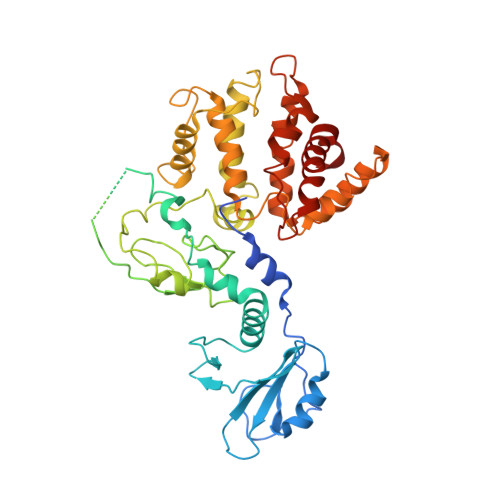Structural mechanism for lipid activation of the Rac-specific GAP, beta2-chimaerin.
Canagarajah, B., Leskow, F.C., Ho, J.Y., Mischak, H., Saidi, L.F., Kazanietz, M.G., Hurley, J.H.(2004) Cell 119: 407-418
- PubMed: 15507211
- DOI: https://doi.org/10.1016/j.cell.2004.10.012
- Primary Citation of Related Structures:
1XA6 - PubMed Abstract:
The lipid second messenger diacylglycerol acts by binding to the C1 domains of target proteins, which translocate to cell membranes and are allosterically activated. Here we report the crystal structure at 3.2 A resolution of one such protein, beta2-chimaerin, a GTPase-activating protein for the small GTPase Rac, in its inactive conformation. The structure shows that in the inactive state, the N terminus of beta2-chimaerin protrudes into the active site of the RacGAP domain, sterically blocking Rac binding. The diacylglycerol and phospholipid membrane binding site on the C1 domain is buried by contacts with the four different regions of beta2-chimaerin: the N terminus, SH2 domain, RacGAP domain, and the linker between the SH2 and C1 domains. Phospholipid binding to the C1 domain triggers the cooperative dissociation of these interactions, allowing the N terminus to move out of the active site and thereby activating the enzyme.
- Laboratory of Molecular Biology, National Institute of Diabetes and Digestive and Kidney Diseases, National Institutes of Health, US Department of Health and Human Services, Bethesda, MD 20892, USA.
Organizational Affiliation:

















